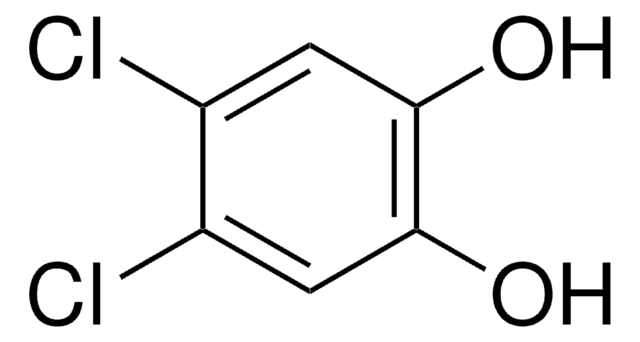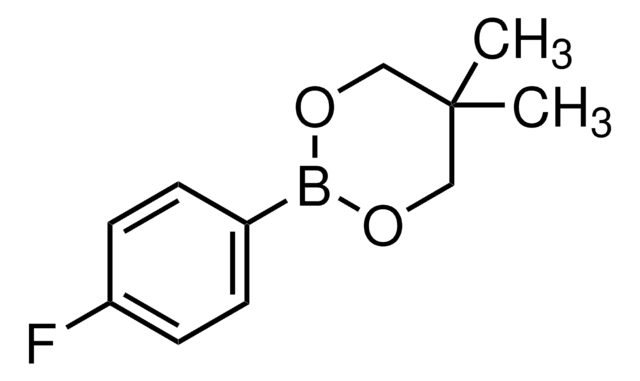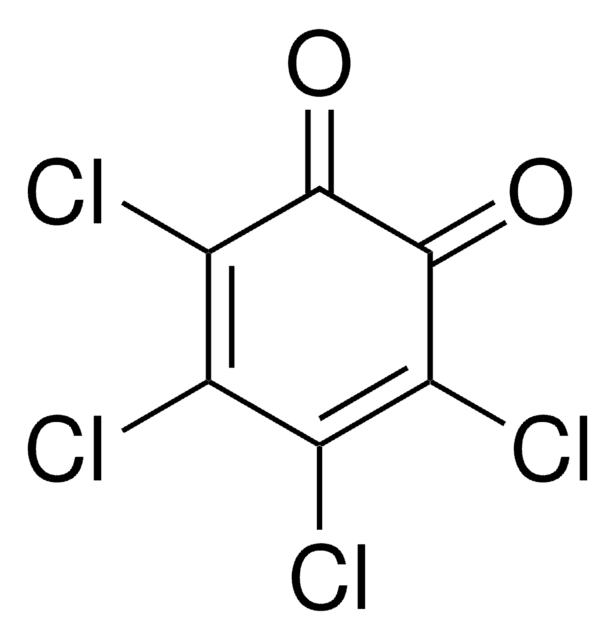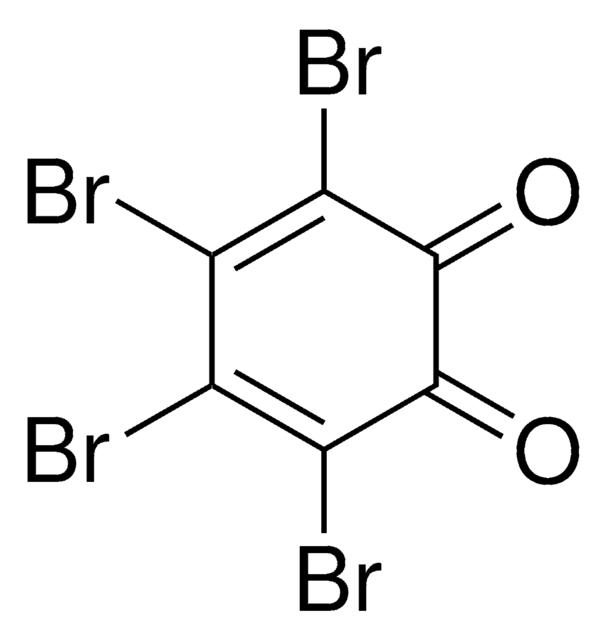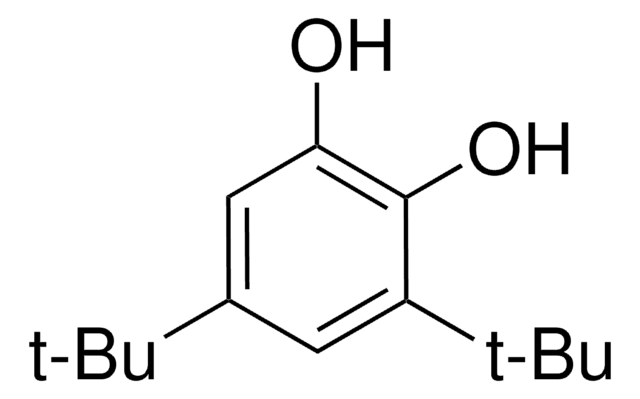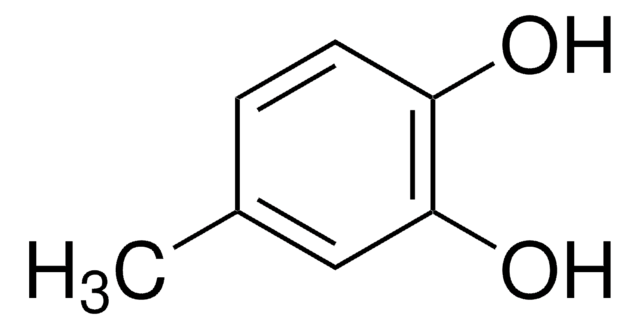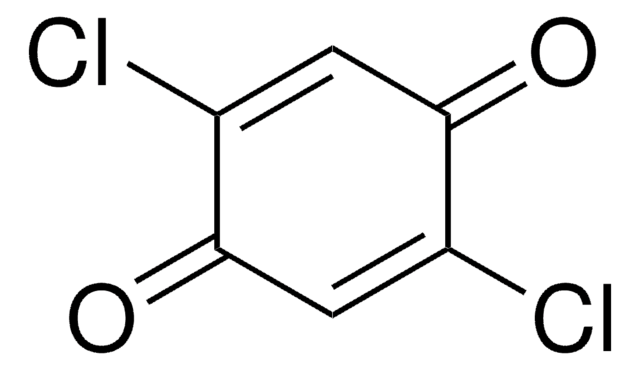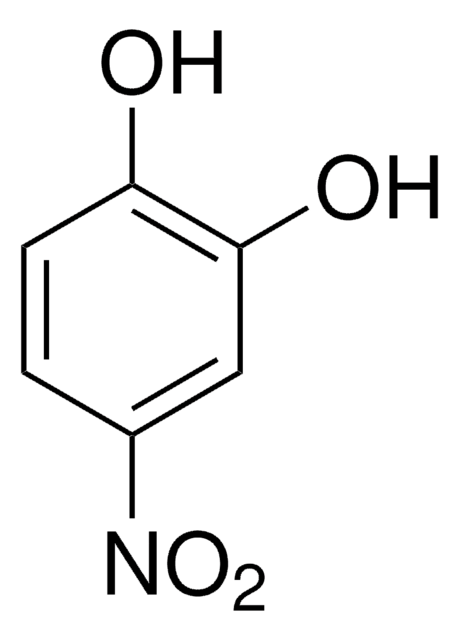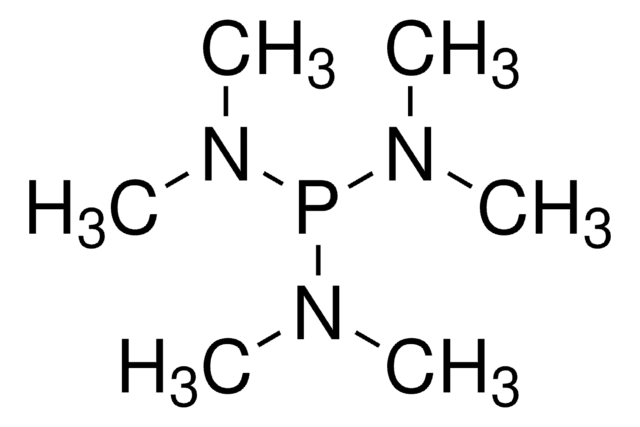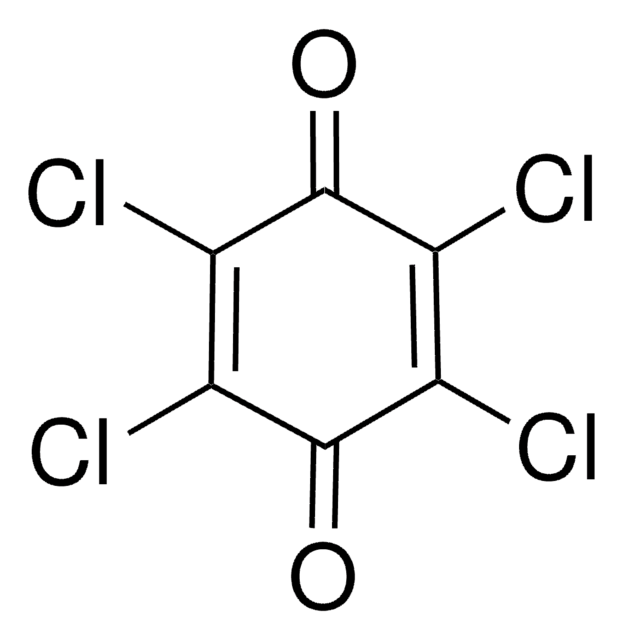추천 제품
일반 설명
Tetrachlorocatechol is a metabolite of pentachlorophenol. Acute toxicity of tetrachlorocatechol has been investigated in male and female mice.
애플리케이션
Tetrachlorocatechol was used to investigate the inhibition of various ureases by halogenated benzo- and naphthoquinones, potent inhibitors of pure ureases from Bacillus pasteurii and Canavalia ensiformis. It may be used to prepare the copper(II) complexes of the potentially tripodal N,N,O ligand 3,3-bis(1-methylimidazol-2-yl)propionate (L1) and its conjugate acid HL1.
신호어
Danger
유해 및 위험 성명서
예방조치 성명서
Hazard Classifications
Acute Tox. 4 Oral - Aquatic Acute 1 - Eye Dam. 1
Storage Class Code
11 - Combustible Solids
WGK
WGK 3
Flash Point (°F)
Not applicable
Flash Point (°C)
Not applicable
개인 보호 장비
dust mask type N95 (US), Eyeshields, Faceshields, Gloves
가장 최신 버전 중 하나를 선택하세요:
이미 열람한 고객
I-H Nam et al.
Applied microbiology and biotechnology, 62(2-3), 284-290 (2003-07-29)
Pseudomonas veronii PH-05, a bacterial strain capable of transforming pentachlorophenol (PCP) to a metabolic intermediate, was isolated by selective enrichment of soil samples from a timber storage yard. Strain PH-05 was shown to be able to grow using PCP as
Shaogui Yang et al.
Journal of hazardous materials, 161(2-3), 1281-1287 (2008-06-17)
A novel photocatalysis material, F-Si-comodified TiO(2) (FST) powder, was synthesized by ultrasound-assisted hydrolysis. The prepared material was characterized by X-ray diffraction (XRD), X-ray photoelectron spectroscopy (XPS) and UV-visible absorption spectroscopy, respectively. XRD analysis indicated that the phase of FST was
Acute toxicities of pentachlorophenol, pentachloroanisole, tetrachlorohydroquinone, tetrachlorocatechol, tetrachlororesorcinol, tetrachlorodimethoxybenzenes and tetrachlorobenzenediol diacetates administered to mice.
Renner G, et al.
Toxicological & Environmental Chemistry, 11(1), 37-50 (1986)
Smadar Levy et al.
Environmental toxicology and chemistry, 28(7), 1380-1389 (2009-02-14)
Pentachlorophenol (PCP) is used in industrial and domestic applications, including as a biocide and a wood preservative. Metabolism of PCP undergoes oxidative dechlorination, forming tetrachlorocatechol (TCC) and tetrachlorohydroquinone (TCHQ). Both sodium azide (NaN(3)) and TCC appear naturally in soil. None
Ainura Ashiralieva et al.
FEBS letters, 555(2), 367-370 (2003-12-04)
Polyhalogenated benzo- and naphthoquinones were found to be potent inhibitors of pure ureases from Bacillus pasteurii and Canavalia ensiformis. They also inhibited ureases in whole cells of Helicobacter pylori, Klebsiella oxytoca and Proteus mirabilis. Inhibition was non-competitive with K(i) values
자사의 과학자팀은 생명 과학, 재료 과학, 화학 합성, 크로마토그래피, 분석 및 기타 많은 영역을 포함한 모든 과학 분야에 경험이 있습니다..
고객지원팀으로 연락바랍니다.